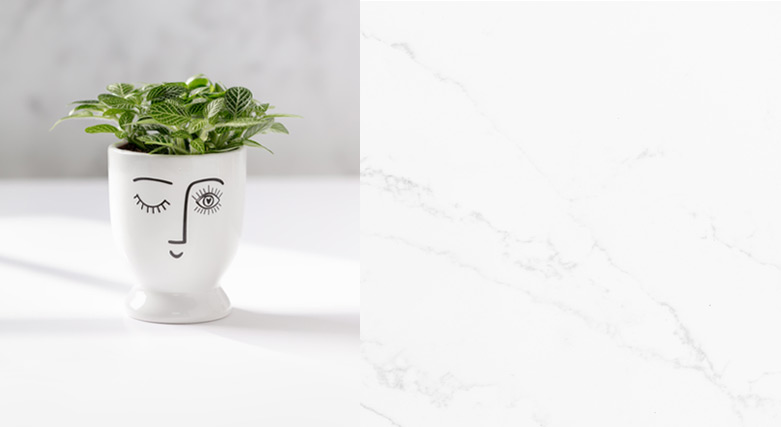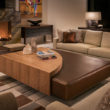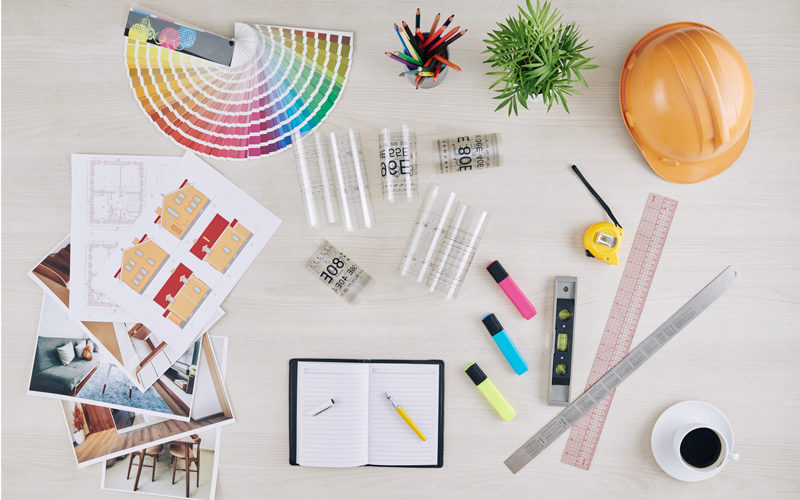“The essence of interior design will always be about people and how they live. It is about the realities of what makes for an attractive, civilized, meaningful environment, not about fashion or what’s in or what’s out. This is not an easy job.” – Albert Hadley
For many, becoming an interior designer is a six-year-long process, but the lifelong love for an exciting and rewarding career in interior design is well worth the wait. Before pursuing this profession, it is important to know the different inherent traits and acquired skills that you need to become a successful interior designer.
An Eye for the Elements of Design
Something that comes naturally to many interior designers is their instinct in terms of the elements and principles of design. This includes color, shape, texture, balance, contrast scale, proportion, and symmetry.

An intuitive eye for these key elements can create spaces that are both striking and well-rounded.
Occasionally, it is seen that when a designer who lacks this instinctive eye designs a space, spatial imbalances appear even after every item is installed. A lamp can be too short for the chair it was meant to highlight, an accessory is in a color that clashes with its surroundings, or a window could be off-center in a room and throw off the furnishings.
It is possible that one has a natural passion for design but not a natural affinity for these key concepts. However, there are tools, training programs, and research materials in the field of design that are excellent ways to hone your skills and give direction to your passion. An understanding of design elements and principles can be gained through extensive research and by studying examples of efficient and aesthetic designs.
Artistic Vision
A designer is said to possess an ‘artistic vision’ when he/she can walk into a room, analyze the space and visualize an aesthetically pleasing setting with efficient design. Such a designer is able to look at a piece of furniture and picture an entire room around it. Artistic vision is undoubtedly an amazing quality to have if you are pursuing a career in interior design.
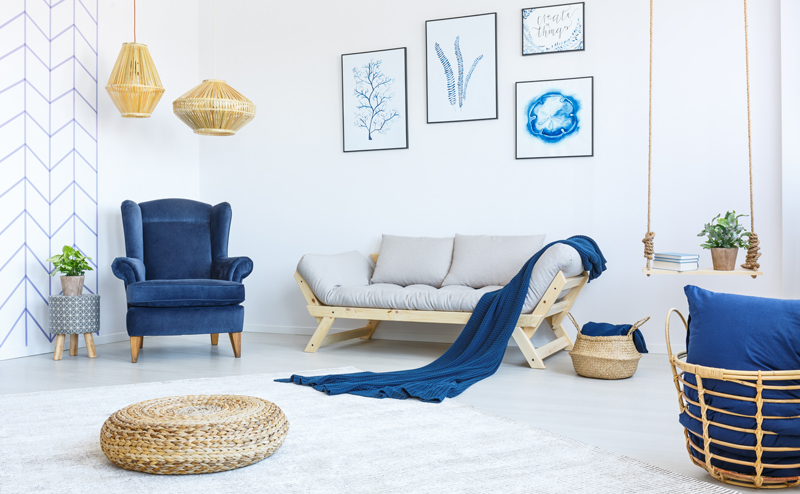
An Eagerness to Never Stop Learning
The world of interior design and architecture is an ever-changing, ever-evolving one. New materials erupt onto the market that surpasses their predecessors. New construction and design methods open up opportunities that were otherwise off-limits. In keeping with this continuous evolution of methods and methodologies in the design world, the Interior Design Continuing Education Council (IDCEC) requires licensed interior designers to attend a certain number of informational seminars a year in order to keep their license.
Although at first glance this seems like a dictatorial demand, those in the design field are typically happy to oblige, commonly exceeding this requirement, as it keeps them updated about the latest in the field of design. CEUs (Continuing Education Units ) are not only informative, but they also open up opportunities and ideas that make your work easier and more exciting. With the constantly evolving possibilities in the interior design field, this career always opens up new and exciting prospects.
Open-Minded to Criticism

While pouring your heart and soul into a project can be rather draining, it is not uncommon for designers to become blind to imperfections in their work, especially on a particularly long-winded project. However, you must remember that your clients do not see the hours of work that have gone into this final product and that there will be times when the ideas you presented do not align with your client’s tastes and opinions. Therefore, having a thick skin while accepting feedback and criticism is important in this business. In fact, your harshest critics can be your greatest teachers. Rather than focusing on the negatives, think of criticism as a great way of growing and maturing as a designer. Being open-minded to criticism can help you reflect and refocus and make every project challenging and exciting!
Leadership and Team-Playing Skills
In many interior design and architecture firms, interior designers and other professionals will be required to work as a team to create their best possible design of a space. While this may sound easy, it can be a taxing exercise as you will need to rely on others to pull their weight while ensuring that you do your part as well. A clash of styles or opinions within the team is not uncommon, and this can lead to misunderstanding and, more importantly, cause delays in the delivery time of the project. For smooth functioning of the organization, conflicts must be dealt with swiftly, and discussions must be directed towards successful compromises and practical solutions.

Compassion for Clients
Designers with little compassion for clients find them to be a double-edged sword. They bring business, but they are notoriously hard to work with. However, designers who truly love their job and want to succeed should see clients for what they really are: families and people that put their homes and businesses into your hands. Although they are a fruitful form of advertising – as happy customers will often spread your business through word of mouth – the importance of their happiness with your work goes further than your paycheck. Therefore, showing a little compassion for your clients is key because designing a home is setting the stage for a family’s life and memories.
Patience and Dedication
A brief interview with any practicing interior designer will make it apparent that one of the most important things to note about the career is not the skills themselves but the fact that you must prepare to put in extra hours. Interior design is certainly not a 9 to 5 job and will often require you to take your work home with you. However, from this dedication comes the creation of masterful spaces, both beautifully designed and wonderfully efficient. Patience and dedication are the key components to what separates a successful interior designer from the rest.
While some people are certainly born with a higher degree of forbearance than others, there is hope yet for those who believe they are not cut out for handling these long hours. When you are neck-deep in a challenging yet rewarding design for a family with two children, a friendly local business owner, or a hospital, the drive to put in those hours will come naturally.
Salesmanship
No matter how stunning your designs are, your success lies in knowing how to sell them to clients. Confidence in yourself and your work goes a long way, but you must also work on your presentation. Having a good posture, appropriate attire, excellent customer service, and polite determination will convey confidence. Your communication and presentation skills must be sharpened, finding the perfect balance between friendly, humble, knowledgeable, and self-assured.
Problem Solving Skills

Believe it or not, interior designers solve problems for a living. Every project that comes to you is a ‘problem’ that requires your solution. “My kitchen is outdated and lacks storage.” “Customers feel crowded in my shop.” “Our home does not fit our personality and lifestyle.” As the expert, it is your job to take your clients’ wants and needs, understand their predicament, and ensure that the finished product thoroughly fixes the problem and exceeds expectations.
Time Management Skills
Interior design is a labor-intensive and time-consuming process. Criteria, needs, wants, budgets, adjacency of rooms, and other programming data must first be collected and sorted through. Contractors must be contacted and collaborated with in cases of extensive renovations. Furniture, lighting, electrical wiring, and floor plans must be drafted. Furniture and finishes must be chosen and worked into the plans. Lighting must be calculated to ensure adequate footcandles. Renders must be generated. And all of this must be executed while sticking to a rather impending deadline.
Interior designers without a good sense of time management will sometimes turn in mediocre work as they did not have time to make it exceptional or they will appear unkempt by extending the deadline past the agreed-upon date. Delivering mediocre work can result in negative reviews on digital platforms or word of mouth from clients. As interior design is a competitive market, negative publicity can result in a drop in business. Planners, calendars, and alerts on your phone will be your best friends in this field.
Perceptiveness of Surroundings
An experienced designer walks into a restaurant and notices that the footcandles are too low. She looks around the room and realizes that it could have been designed with better circulation. She enters a hotel and immediately spots the exits. Being perceptive of your surroundings as you enter any interior helps you exercise your knowledge of good design as well as helps you learn from others’ mistakes or successes.
Flexibility
“Be flexible and learn to erase” would be a prime piece of advice given to someone new to the world of interior design. We can be so caught up in our ideas, finding them absolutely ideal, that we may become hesitant or stubborn about adjusting or even scrapping it altogether. However, in our profession, we must remember that it is a rare occurrence for a client to be 100% satisfied with your first presentation. It may be as small as a quick change of furniture or as large as completely scrapping the entire design.
This being said, a quality designer doesn’t let changes faze them. It is essential to be flexible and lenient in these times to ensure a comfortable and happy client. Usually, the finished final design will be better and more efficient than the first, and everyone involved in the project will experience utmost satisfaction.
Drafting and Rendering
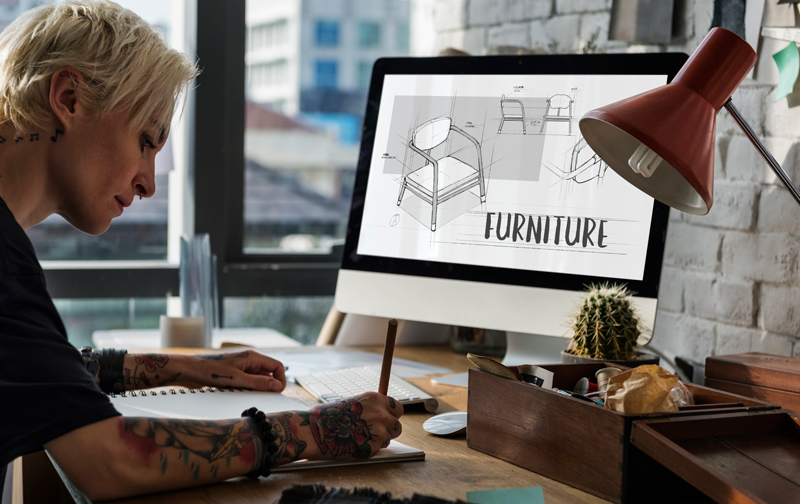
So many potential interior designers ask the question: “Do I need to draw well to be an interior designer?” And the answer is: drawing well is a fantastic quality to have in interior design. However, it is not necessary. There are plenty of successful designers who are not artists. With astounding technological advances, specifically in CAD software, designers have been saving time and effort on drafting and rendering. Gorgeous renderings need not be hand-rendered, as this can be taken care of on your CAD software.
It is, however, important to understand how to hand draft, as this is vital information. It is also required that you understand the basics of sketching so that you can quickly sketch designs while trying to convey ideas to clients. Some clients are notoriously incapable of picturing what a space will look like without having a visual. And that sometimes requires you to pick up a pencil and sketch it out for them, and this is something clients highly appreciate!
Knowledge of Sustainability

With our clients becoming more and more Earth-conscious, we must learn to create eco-friendly designs. This includes knowing what materials and methods are considered ‘green’, as well as incorporating upcycling, recycling, passive heating, etc. For example, a concept currently on the rise is called “Cradle to Cradle” design.
“Cradle to Cradle” design is a concept by architect William McDonough and Chemist Michael Braungart. It replaces the method that most products are manufactured with which is “Cradle to Grave”: the idea that a product is made with a purpose and once that purpose is fulfilled it is disposed of into a landfill. By contrast, “cradle to cradle” designed products fulfill their purpose and take on the purpose of aiding in more life by being completely recyclable or returned to the earth directly or indirectly. For example, Designtex is a textile company that uses a new production method of their upholstery that actually cleans water, and their fabrics (especially their scraps) are used for growing strawberries.
Knowledge of Accessibility
Providing accessible spaces that can be used by the young, old, disabled, able-bodied, and everyone in between is one of the most influential things we can do as designers. A growing number of injured individuals and elderly are favoring a life at home rather than a nursing home environment. This is increasing the demand for well-designed homes that are inclusive in nature and designed keeping everyone in mind. Being well versed in the standards of making spaces accessible to everyone will make you a fantastic asset to any company.
An Understanding of Building Construction and Building Codes
A thorough understanding of building construction is important to any interior designer, no matter the career path you decide to take. It teaches you where you can add or remove walls, windows, doors, etc., as well as gives you the ability to plan additions and complete renovations of a home or office. To commercial designers, building construction is even more important as they may have a hand in the structural aspects of the interior.

Building codes are critical pieces of information that are used regularly in an interior designer’s career. Determining occupancy classifications, occupancy loads, fire ratings, emergency exit placements, accessibility standards, etc., are all a part of a commercial interior designer’s job description, and having a handle on these concepts can make a great designer from a good one.
This bit of information alone is probably daunting, however in any CIDA accredited interior design school you will have one or more years dedicated to developing your knowledge in these subjects.
Lastly and most importantly, in order for a designer to be successful, they must have a passion for the work. Interior design is not a career for someone who only cares about the paycheck. It’s a lifelong friendship with your profession.
“I am going to make everything around me beautiful, that will be my life.” – Elsie De Wolfe
Do you have any other skills that are helping you immensely in your design business? What other qualities do you think an interior designer must absolutely have? Let us know in the comments below.

